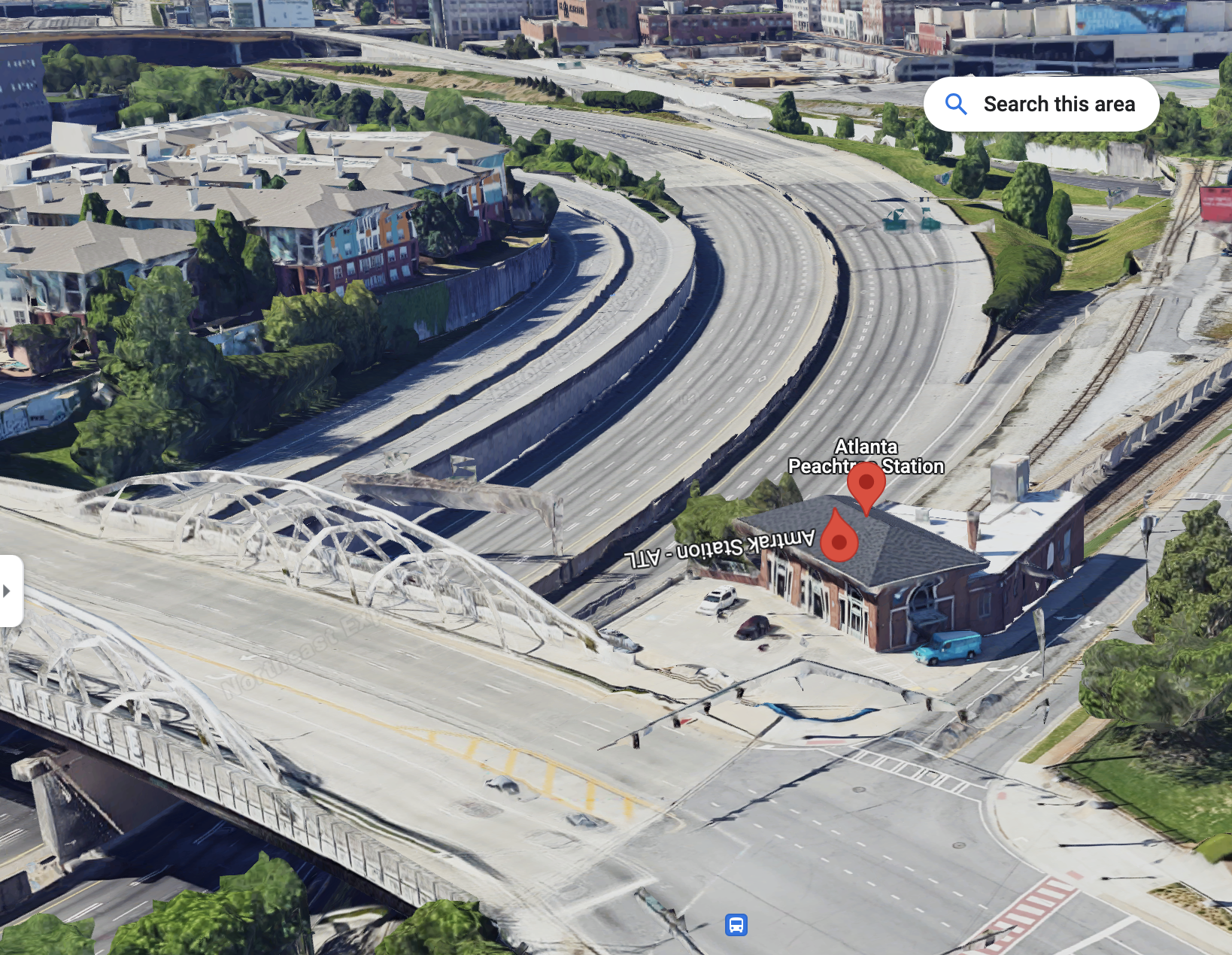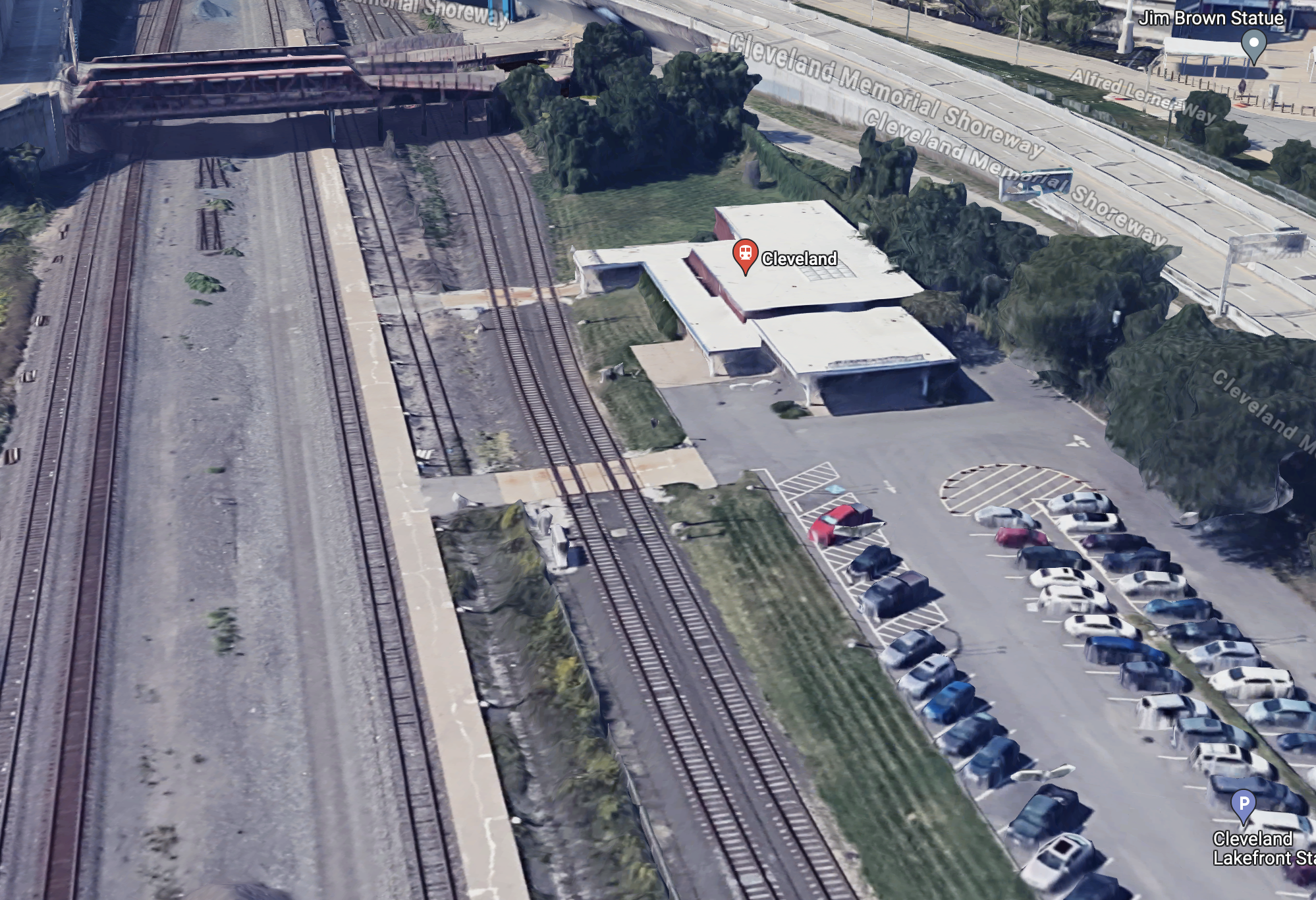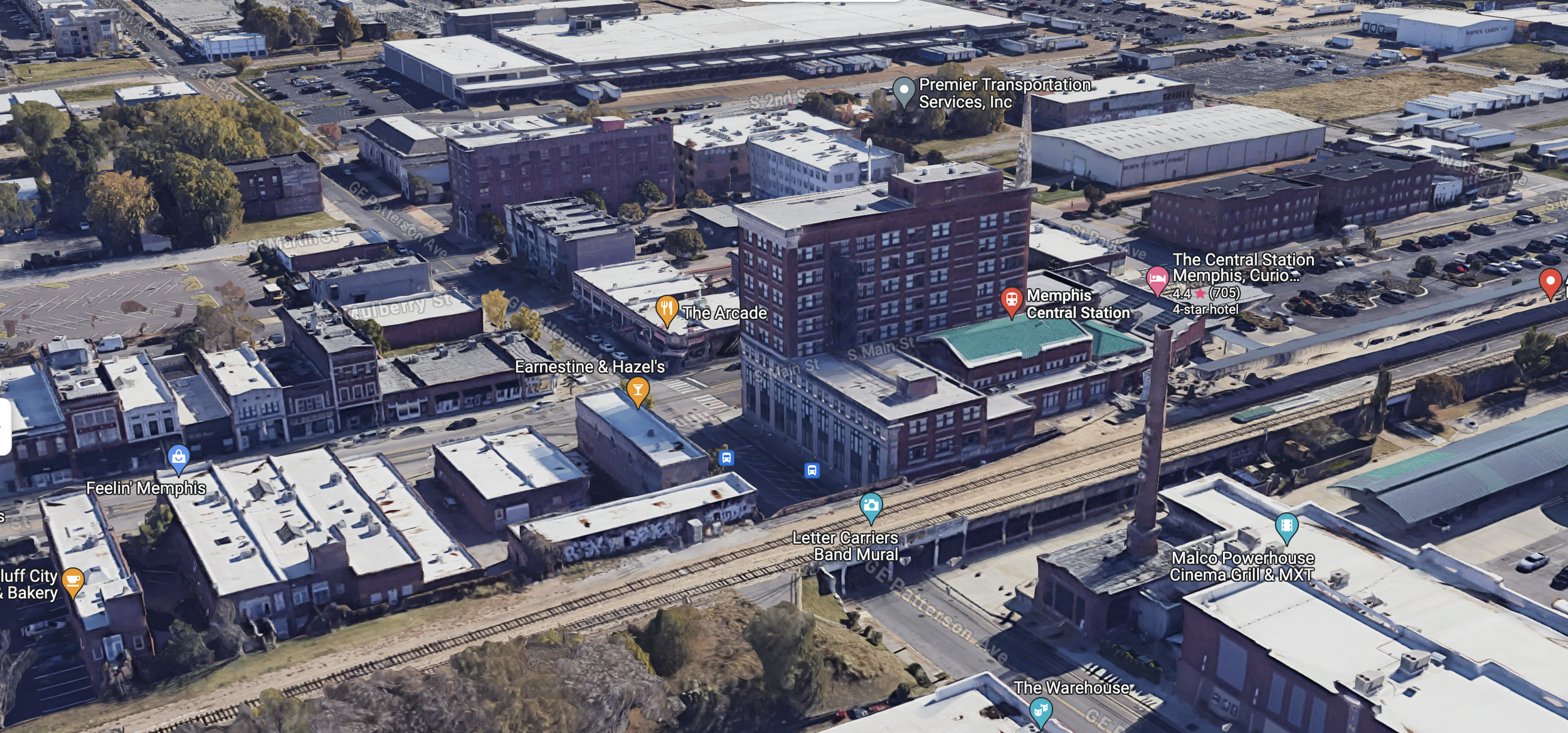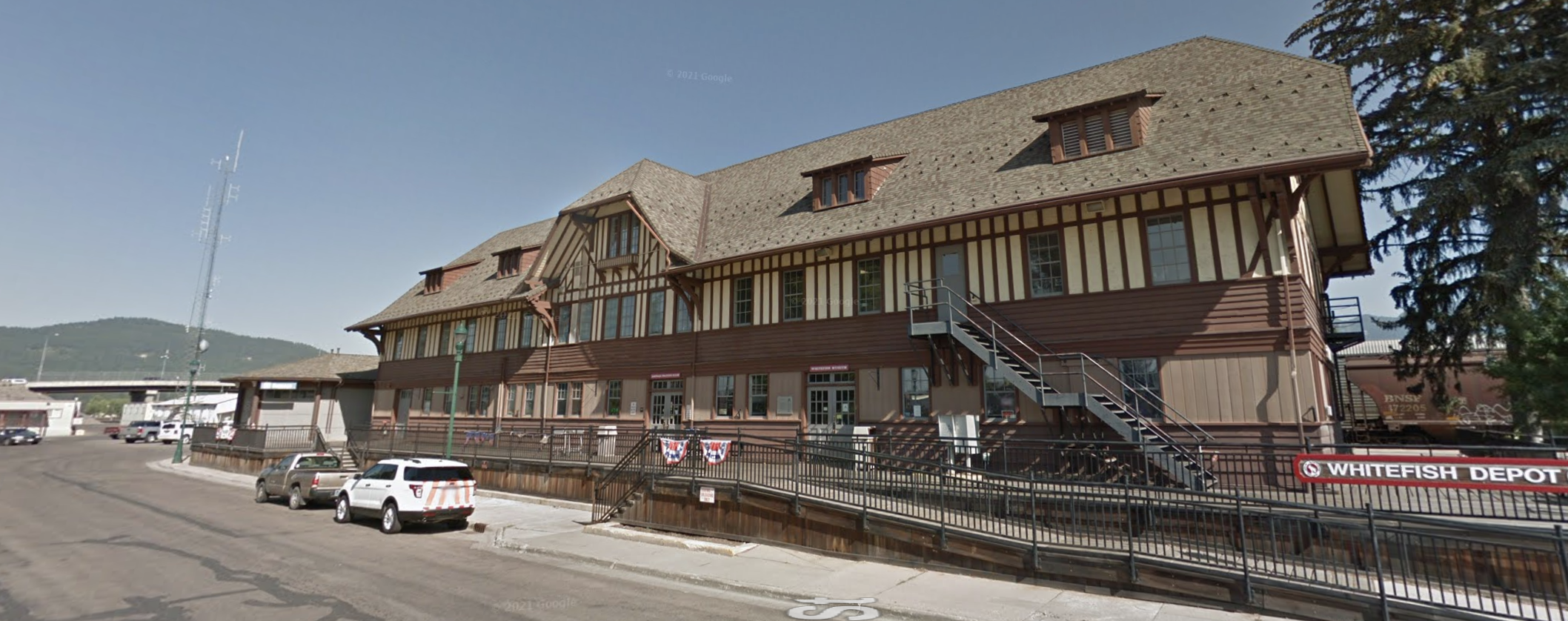Amtrak Stations: By The Numbers
Setting The Scene
The train station; a natural hub historically, socially, and economically. A structure that can mean a lot for the town or city a service is stopping in. A striking visual to encapsulate the reason for the stop and expands on the local traditions and commerce of a place. The train is a hub for which there is a sense of place. A sense of coming and going. A sense of travel and the organized chaos it brings. Amtrak, however, whether through it own actions or outside pressure has somehow missed the core point of the train station as a place. Both in placement and looks.
It is here we come to Amtrak’s rather underwhelming stations. These stops are more often placed in cities with large metro populations and built at or near the beginning of Amtrak’s passenger rail service. Lack of funds and limited government oversight or thought gave us these stations. Stations not befitting the larger city in which they’re placed. It is true, some of these stations can be classified as ‘park n’ rides.’ However, I’d venture to argue and consider the whole idea of the concept is actively against urbanism and cities on just about every single level from design to economics. Yes, I’m looking at you Depew Station.
The Underwhelming Stations (metro population)
**Walking Time/Distance From Train Station to Nearest Convenience Store (Distance via Google Maps)**
Houston, TX (pop. 7,122,240) ~ 16m/0.7mi
Atlanta, GA (6,144,050) ~ 12m/0.5mi
Cleveland, OH (2,185,825) ~ 24m/1mi
Detroit, MI (4,365,205) ~ 12m/0.5mi
Buffalo, NY (1,125,637) ~ 15m/0.6mi
Depew Station, Buffalo, NY (1,125,637) ~ 51m/2.3mi
Peachtree Station ~ Atlanta, GA
Detroit Amtrak Station, MI
Lakeshore Station - Cleveland, OH
Houston Amtrak Station, TX
All this goes without saying the allocation of Amtrak’s stations is just as nonsensical. According to the US Department of Transportation transportation statistics on Amtrak ridership; the following stations had the lowest Amtrak ridership for 2022 in their respective state.
**Disclaimer, of course we didn’t include Wyoming, South Dakota, Hawaii, and Alaska because the former three simply don’t have Amtrak service. Alaska’s passenger rail is ran by the state-owned Alaska Railroad; which provides passenger service between Seward, Anchorage, Denali, and Fairbanks.**
The Underused Stations
**Each state’s least busiest station running services throughout the year based on US DOT 2022 annual Amtrak ridership data**
Anniston, AL ~ 2,486 riders
Benson, AZ ~ 1,743 riders
Arkadelphia, AR ~ 956 riders
Pamona, CA ~ 1,131 riders
Lamar, CO ~ 915 riders
Wallingford, CT ~ 7,141 riders
Newark, DE ~ 22,125 riders
Okeechobee, FL ~ 4,104 riders
Tocca, GA ~ 1,304 riders
Sandpoint, ID ~ 4,537 riders (only Amtrak in the state)
Gilman, IL ~ 1,373 riders
Connersville, IN ~ 373 riders
Creston, IA ~ 1,785 riders
Hutchinson, KS ~ 2,637 riders
South Shore-South Portsmouth, KY ~ 732 riders
Schriever, LA ~ 933 riders
Old Orchard Beach, ME ~ 18,730 riders
Rockville, MD ~ 4,058 riders
Framingham, MA ~ 1,586 riders
Albion, MI ~ 1,890 riders
Detroit Lakes, MN ~ 3,123 riders
Hazlehurst, MS ~ 956 riders
Arcadia, MO ~ 876 riders
Cut Bank, MT ~ 1,219 riders
Holdrege, NE ~ 1,014 riders
Winnemucca, NV ~ 3,007 riders
Claremont, NH ~ 2,394 riders
Princeton Junction, NJ ~ 21,937 riders
Lordsburg, NM ~ 661 riders
Fort Edward, NY ~ 6,096 riders
Gastonia, NC ~ 1,213 riders
Stanley, ND ~ 2,080 riders
Alliance, OH ~ 1,132 riders
Purcell, OK ~ 1,337 riders
Chemult, OR ~ 2,618 riders
North Philadelphia, PA ~ 1,323 riders
Westerly, RI ~ 41,293 riders
Spartenburg, SC ~ 2,699 riders
Newbern-Dyersburg, TN ~ 2,465 riders
Sanderson, TX ~ 198 riders
Helper, UT ~ 1,524 riders
Ferrisburgh-Vergennes, VT ~ 633 riders
Clifton Forge, VA ~ 1,475 riders
Wishram, WA ~ 872 riders
Alderson, WV ~ 315 riders
Portage, WI ~ 4,810 riders
Alderson Amtrak Station, WV
Alderson, West Virginia’s Amtrak station saw the least riders of any year-round station in the US with just 315 passenger on the Amtrak Cardinal line for the entire 2022 year. This region of the country overall lacks ridership. After all, with both nearby Hinton and Thurmond, WV stations also receiving some of the lowest ridership in the country. Though, that quiet aspect of the region is paid for in full by the serene beauty of the nearby New River Gorge National Park. As with many other WV settlements, Alderson’s station and railroad parallels the (in this case) Greenbrier River; creating a hollow in the landscape. Despite the depressing economics of West Virginia and the region in general; these are some of my favorite aspects about the state’s geography.
Overall, the five US states that were at the bottom in Amtrak ridership for 2022 included;
5 / Nebraska (pop. 1,978,379) ~ 31,977 riders
4 / Alabama (pop. 5,108,468) ~ 29,086 riders
3 / Arkansas (pop. 3,067,732) ~ 24,482 riders
2 / Kentucky (pop. 4,526,154) ~ 6,120 riders
1 / Idaho (pop. 1,964,726) ~ 4,537 riders
…with Kansas, Iowa, West Virginia, Utah, and Tennessee rounding out the top ten. I can understand Idaho’s numbers because the geographical remoteness and the literally one station Amtrak serves in the state, but Kentucky is a missed opportunity.
What causes underwhelming and underused stops? Accessibility, or lack there of to the station caused by physical distance plays a big role. Now, to look at some positive ridership numbers. Below are some stations both myself and Amtrak consider underrated based on location, service, and geographical beauty.
The Underrated Stations (population)
Old Orchard Beach Amtrak Station, ME
**Walking Time/Distance From Train Station to Nearest Convenience Store (Distance via Google Maps)**
New London, CT (pop. 27,367) - 8m/0.3mi, 138,728 riders (2022)
Old Orchard Beach, ME (8,960) ~ 6m/0.3mi, 18,730 riders
Mystic, CT (4,348) ~ 2m/440ft, 24,160 riders
Memphis, TN (633,104) ~ 11m/0.5mi, 38,891 riders
Hermann, MO (2,185) ~ 13m/0.6mi, 17,007 riders
Waterbury, VT (5,331) ~ 9m/0.4mi, 4,423 riders
Staunton, VA (25,750) ~ 6m/0.3mi, 4,748 riders
Hermann Amtrak Station, MO
Mystic Amtrak Station, CT
Memphis Amtrak Station, TN
New London Amtrak Station, CT (most visited in CT)
Along Connecticut’s Thames River lies the most popular of these underrated stations. New London’s station serves local, regional, and national (via the Shore Line East Train) services to, among others, Boston, Washington, and New Haven in a convenient, centralized location. Hosting the least ridership on this list, Waterbury, is located just east of Burlington and serves as a stop on Amtrak Vermonter service. Despite it's low ridership, Waterbury hosts the same comfy urban fabric we come to expect from New England.
Stations like these can be found around the US. Amtrak services in Paso Robles, CA; Laurel, MS; Las Vegas, NM; and Holland, MI also fit these characteristics. Positive attributes that lead to convenient, efficient, and in my opinion; a far better look and approach to address the health and safety of a community.
The most visited US stations per state (2022) includes;
Birmingham, AL ~ 21,211 riders
Flagstaff, AZ ~ 25,499 riders
Little Rock, AR ~ 13,492 riders
Los Angeles, CA ~ 928,558 riders
Denver, CO ~ 104,513 riders
Wilmington, DE ~ 433,976 riders
Sanford, FL ~ 269,381 riders
Atlanta, GA ~ 49,579 riders
Sandpoint, ID ~ 4,537 riders (only Amtrak in the state)
Chicago, IL ~ 2,359,084 riders
South Bend, IN ~ 18,848 riders
Osceola, IA ~ 9,377 riders
Newton, KS ~ 10,978 riders
Fulton, KY ~ 2,511 riders
New Orleans, LA ~ 99,672 riders
Portland, ME ~ 145,776 riders
Baltimore, MD ~ 838,591 riders
Boston-South Station, MA ~ 1,216,560 riders
Ann Arbor, MI ~ 122,757 riders
St. Paul-Minneapolis, MN ~ 59,815 riders
Jackson, MS ~ 24,209 riders
St. Louis, MO ~ 293,338 riders
Whitefish, MT ~ 37,597 riders
Omaha, NE ~ 17,023 riders
Reno, NV ~ 47,136 riders
Exeter, NH ~ 45,733 riders
Newark, NJ ~ 495,422 riders
Albuquerque, NM ~ 41,692 riders
NYC-Penn Station, NY ~ 8,008,700 riders
Charlotte, NC ~ 196,223 riders
Minot, ND ~ 16,529 riders
Cleveland, OH ~ 48,887 riders
Oklahoma City, OK ~ 42,793 riders
Portland, OR ~ 375,071 riders
30th Street Station-Philadelphia, PA ~ 3,058,329 riders
Providence, RI ~ 569,195 riders
Charleston, SC ~ 37,461 riders
Memphis, TN ~ 38,891 riders
Fort Worth, TX ~ 93,181 riders
Salt Lake City, UT ~ 26,821 riders
Essex Junction, VT ~ 17,412 riders
Staples Mill Station-Richmond, VA ~ 303,204 riders
Seattle, WA ~ 384,726 riders
Martinsburg, WV ~ 8,148 riders
Milwaukee, WI ~ 379,535 riders
The three notable thing I’ve noticed from this list is, obviously, NYC is gonna have the most riders. The amount of gravity New York City has on the way people get around in the region is huge. This can be seen in the ridership of Philly’s 30th St. Station and Boston’s South Station; both clocking over one million riders for the 2022 year. Secondly, of course, this list is made up of the bigger cities in each state. Some of them even state capitals themselves. Lastly, and perhaps the least obvious, are the stations in small towns that host their state’s greatest amount of visitors. There are a number of factors at play here, but first let’s check out some examples;
Small, but Mighty Stations
Whitefish, MT (pop. 7,870) ~ 37,597 riders (2022)
Whitefish not only hosts a large rail yard, but also has great location. The depot is located at a junction with a north-south route that leads to Canada for freight and sits near Glacier National Park. Making it a convenient place for passengers to alight, as well.
Whitefish Amtrak Station, MT
Fulton, KY (pop. 2,385) ~ 2,511 riders (2022)
Also hosting more riders than the town’s population; Fulton’s station is located far outside of the small town. At the side of US-51, down a long gravel drive you’ll find this park-n-ride consisting of a trailer with two bathrooms and a stub of a platform. However, it being out in the middle of nowhere does have it advantages in the form of natural security for your car, an overall clean facility, and quiet place to catch Amtrak’s ‘City of New Orleans’ service. Don’t underestimate simplicity I guess, but it still baffles me that this is the busiest Amtrak stop in the state.
Fulton Amtrak Station, KY
Osceola, IA (pop. 5,536) ~ 9,377 riders (2022)
Like Kentucky, Iowa is another place where the state government just doesn’t like passenger rail. Thus, state politician continuously block, defund, or cancel proposed passenger service throughout the state. Sometimes they even pull an Indiana and negatively affect the outcomes of nearby state rail proposals such as; Illinois and Missouri. Selfishly and purposely slowing regional rail reconnections for, what I assume are, personal monetary-driven incentives. This leads to outdated maps, infrastructure, and situations like Osceola leading the state’s station ridership. All the while, Iowa’s three largest cities (Davenport, Des Moines, and Cedar Rapids) don’t have a single train station to speak of. Yep, actually you gotta go down to the state’s 16th largest city, Ottumwa (pop. 25,350), to find an active train station of ANY sort.
At that to say, there are many outside variables at play when looking at ridership numbers in any place. How about, on a more positive note, we take a look at a station investing in itself to better the city where it stands.
Raleigh, NC (pop. 469,124) ~ 171,091 riders (2022)
Despite being home to 300,000 less people than the states largest city, Charlotte (pop. 879,709). Raleigh's Amtrak only saw about 20,000 less riders in 2022, making it second busiest station in North Carolina. However, it takes top spot for most sleek and modern station design. Beginning service in 2018, Raleigh Union Station serves on Amtrak’s Carolinian, Piedmont, and Silver Star routes, as well as connects to the city’s GoRaleigh Bus Network. This staffed station contains one line running each way offering level boarding at each. Design with an upper and lower mezzanine; this stop is one of two high-level platforms south of Washington DC (the other being Roanoke, VA). In addition to hosting a wine bar, Raleigh decided to invest in the land adjacent to the station consisting of apartments, bars, restaurants, office space, and parks close-in and just north of downtown. Still being built up, In addition to settled into as of January 2024. All this amounting to the return of pre-COVID ridership numbers. Furthermore, ridership increased from 150,919 in 2017. Accounting for around 20,000 more riders in a five year span. All in a place the size of Akron, Ohio. This is how you do it folks.
Raleigh, NC Amtrak Station
Overall, the top five US states in Amtrak ridership for 2022 includes;
5 / Massachusetts (pop. 7,001,399) ~ 2,679,581 riders
4 / Illinois (12,,549,689) ~ 3,389,218 riders
Washington DC (678,972) ~ 3,631,677 riders
3 / Pennsylvania (12,961,683) ~ 4,182,216 riders
2 / California (38,965,193) ~ 6,414,831 riders
1 / New York (19,571,216) ~ 9,888,379 riders
Interestingly enough, Washington DC sneaks in the middle of the list. Having greater ridership than 47 states, despite not being a state. Cities like Boston, Chicago, Philadelphia, Los Angeles, San Francisco, and New York City account for a good portion of their respective ridership totals. However, in the rest of each of these states, besides maybe Massachusetts; passenger rail is usually not reliable. Due in large part to non-existent or, at the very least, infrequent passenger services. Virginia, New Jersey, Maryland, and Connecticut round out the states with at least one million riders in 2022. Also, despite accounting for a population of around just under 1.1 million in 2022; that same year, Rhode Island tallied 756,776 riders taking the Amtrak passenger rail around the region.
Amtrak’s Northeast Corridor
Most of these states encompass Amtrak’s Northeast Corridor. Connecting the large cities and small towns of the east coast and New England including; Maine, New York, Delaware, Maryland, New Jersey, Vermont, Massachusetts, Connecticut, New Hampshire, Washington DC, and northern Virginia. Amtrak’s Acela, the closest thing currently to high speed rail in the US (top speed = 150mph), boasted nearly three million riders in 2023. Furthermore, Amtrak’s more localized northeast regional services amassed a little over 9.163 million riders. Stations along the regional route span north-south from South Station-Boston, MA to Newport News, VA; with connecting bus services to Providence, RI. Overall, Amtrak’s Regional Northeast Services saw a 31.3% increase in 2023; rising by nearly three million riders to just over 12.1 million.
The success of Amtrak’s routes in this region don’t stop at regional rail either, as every state support Amtrak line in the region sported ridership growth between 2022 and 2023. Notably including two out of the three US routes that surpass one million riders for the year; Amtrak’s Empire South service in New York with 1,244,276 riders, and the Keystone route running through Pennsylvania receiving 1,115,779 riders in 2023. I’ll cover this more in-depth when I talk about Amtrak’s route ridership data FY 2023 in a later journal. Anyway, in short, a correlation can be made between an increase in ridership and the increase in general station quality. In a region like the northeast US; proximity to multiple large cities acts as a catalyst to help support and facilitate a positive feedback loop. Furthering ridership and creating an incentive for quality. Quality that can help improve the efficiency and accessibility of a rail service, again improving ridership.
Drawing the line at 200,000 riders FY 2022; which stations do we find? Can we draw any correlations?
Amtrak Stations w/ Ridership > 200,000 FY 2022
California (CA) ~ 9
Bakersfield, CA ~ 314,684 riders
Emeryville, CA ~ 283,631 riders
Fresno, CA ~ 221,781 riders
Los Angles, CA ~ 928,558 riders
Sacramento, CA ~ 456,647 riders
Old Town Station-San Diego, CA ~ 253,617 riders
San Diego, CA ~ 443,091 riders
Santa Barbara, CA ~ 213,697 riders
San Joaquin St. Station-Stockton, CA ~ 212,527 riders
Connecticut (CT) ~ 2
New Haven, CT ~ 617,119 riders*
Stamford, CT ~ 269,195 riders*
Delaware (DE) ~ 1
Wilmington, DE ~ 433,876 riders*
Washington DC ~ 1
Union Station-Washington DC ~ 3,631,677 riders*
Florida (FL) ~ 1
Sanford, FL ~ 269,381 riders
Illinois (IL) ~ 1
Chicago, IL ~ 2,359,084 riders
Maryland (MD) ~ 2
Baltimore, MD ~ 838,591 riders*
BWI Station-Baltimore, MD ~ 522,353 riders*
Massachusetts (MA) ~ 4
Back Bay Station-Boston, MA ~ 606,967 riders*
North Station-Boston, MA ~ 346,610 riders
South Station-Boston, MA ~ 1,216,560 riders*
Route 128 Station-Boston, MA ~ 303,652 riders*
Missouri (MO) ~ 1
St. Louis, MO ~ 293,338 riders
New Jersey (NJ) ~ 3
Metropark, NJ ~ 225,661 riders*
Newark, NJ ~ 495,422 riders*
Trenton, NJ ~ 254,694 riders*
New York (NY) ~ 3
Albany, NY ~ 640,353 riders
Hudson, NY ~ 208,302 riders
Penn Station-New York City, NY ~ 8,008,700 riders*
Oregon (OR) ~ 1
Portland, OR ~ 375,071 riders
Pennsylvania (PA) ~ 3
Harrisburg, PA ~ 258,937 riders
Lancaster, PA ~ 305,698 riders
30th St. Station-Philadelphia, PA ~ 3,058,329 riders*
Rhode Island (RI) ~ 1
Providence, RI ~ 569,195 riders*
Virginia (VA) ~ 3
Alexandria, VA ~ 211,971 riders*
Lorton, VA ~ 269,381 riders
Staples Mill Station-Richmond, VA ~ 303,204 riders*
Washington (WA) ~ 1
Seattle, WA ~ 384,726 riders
Wisconsin (WI) ~ 1
Milwaukee, WI ~ 379,535 riders
*denotes station on Amtrak’s Northeast Regional route
Now with this data in hand; we can round back to Amtrak’s Northeast Regional service, and to no surprise quantity and quality go hand in hand. Out of the 36 Amtrak stations recording at least 200,000 riders in 2022, 16, or 44% of them are located on the NE Regional Route. A further 25% of them are located in California. Currently, showing an overall desperate need for reliable, efficient, and accessable inner-city passenger rail travel in the interior of the US. The interior of the US simply needs interstate organization on both a state and regional level. The unneccessary political discontent of the US is put on full display when a shared vision of an interstate passenger rail system is politicized. The lack of continuity from state-to-state absolutely kills any purpose for passenger rail.
Therefore, just like how Amtrak’s Northeast Corridor is a positive feedback loop invigorating efficiency and the regional economy. A negative feedback loop can appear when selfish, incompetent, and disconnected oversight occurs. It takes more than money to see these projects through, in my opinion. It take more than feasibility studies to accommodate and believe a project will be a sound investment. It takes a shared goal, it takes a consensus, and it takes a shared assertion above our own personal goals. Does the US interior states have the capacity to organize, or even confidently believe these ideals?

















